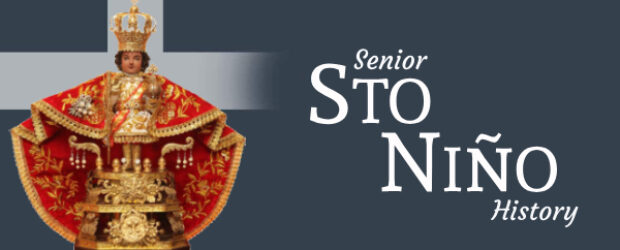History of Sto Niño
Sto Niño in Philippines.
Among the popular devotions of Philippines, none is more significant than the devotion of Santo Niño. This is a devotion dedicated to the Christ-child seemed to have originated in Spain at the beginning of the 16th century and usually it emphasized the ideas of kingship. From Spain, the devotion spread to the rest of Europe.
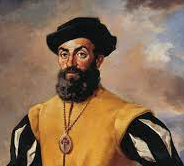 Saturday, March 16, 1521, the ship of Ferdinand Magellan reached Samar. After the encounter, Magellan sailed to another island of Limasawa, on March 31, 1521, the first mass was celebrated on Philippine soil. After the mass, they sailed to the harbor of Cebu where, through an interpreter, Magellan made known his intention. The Spaniards were welcomed by Rajah Awi, chief of the island.
Saturday, March 16, 1521, the ship of Ferdinand Magellan reached Samar. After the encounter, Magellan sailed to another island of Limasawa, on March 31, 1521, the first mass was celebrated on Philippine soil. After the mass, they sailed to the harbor of Cebu where, through an interpreter, Magellan made known his intention. The Spaniards were welcomed by Rajah Awi, chief of the island.
One week after the Spaniards landed in Cebu, the first to be baptized was Rajah Humabon. In the afternoon, it was the turn of the Queen and the ladies. Before baptism, the Queen was shown an image of the cross, the statue of the Mother of god and Santo Niño. After her baptism, the Queen asked for the image of the Santo Niño and it was entrusted to her keeping. She was given the name Doña Juana.
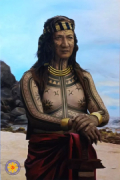 A short while, the Rajah of Cebu accustomed to foreign traders from Asia, was prepared to deal with the Spaniards as traders. The intervention of Rajah Awi and the warnings of the traders concerning the might of white visitors disposed Humabon to make peace with them. To visitors of his ship, Magellan gave a brief catechesis of Christian faith.
A short while, the Rajah of Cebu accustomed to foreign traders from Asia, was prepared to deal with the Spaniards as traders. The intervention of Rajah Awi and the warnings of the traders concerning the might of white visitors disposed Humabon to make peace with them. To visitors of his ship, Magellan gave a brief catechesis of Christian faith.
After this Magellan became the champion of Rajah Humabon. He ordered all the chiefs to surrender and meet the king. Lapu-lapu, king of Mactan was no coward. Overconfident and wanting to teach Lapu-lapu a lesson and at the same time to impress Rajah Humabon, Magellan sailed to Mactan where Lapu-lapu was ready and waiting. A fierce battle ensued, and Magellan was hit and he commanded his men to fall back to their boats.
A few loyal soldiers remained by his side. They could not save Magellan who was wounded again. After Magellan died, the Spaniards fled from Mactan while the lifeless body of their fallen leader was brought to Lapu-lapu. Aboard the ship, Rajah Humabon and the Spaniards mourned for Magellan. Forty-four years later (1565), the Spaniards returned to Cebu headed by Miguel Lopez de Legaspi. They were met with resistance and hostility and Legaspi had to resort to force. Meanwhile, Juan de Camuz, a sailor from Bermio, Vizcaya headed towards the native houses. He found a box and wondered what it contained. Upon opening it, he saw that it had an image of the Santo Niño, the one given to the Queen of Cebu by Magellan.
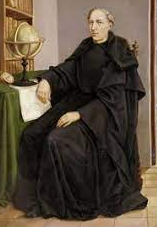 The image was presented to Legaspi. The finding of the statue caused a sensation among the Spaniards. They considered it as an omen to eventually convert the natives to Christianity and went about building a camp and a temporary chapel. The enthronement of the statue in the temporary chapel was held with solemn ceremonies. Attracted by the rites and because of a strong curiosity, the Cebuanos emerged from their hiding places and joined the ceremony. The Augustinian priest, Fr. Andres de Urdaneta enthroned the image of Santo Niño. Then, the natives talked of peace with Legaspi. In honour of the Santo Niño, the Spaniards organized the Confraternity of the Holy Child. Legaspi and his officials made a solemn bow.
The image was presented to Legaspi. The finding of the statue caused a sensation among the Spaniards. They considered it as an omen to eventually convert the natives to Christianity and went about building a camp and a temporary chapel. The enthronement of the statue in the temporary chapel was held with solemn ceremonies. Attracted by the rites and because of a strong curiosity, the Cebuanos emerged from their hiding places and joined the ceremony. The Augustinian priest, Fr. Andres de Urdaneta enthroned the image of Santo Niño. Then, the natives talked of peace with Legaspi. In honour of the Santo Niño, the Spaniards organized the Confraternity of the Holy Child. Legaspi and his officials made a solemn bow.
The enthronement of the Santo Niño was the first crack in the hostile relations between the natives and foreigners. Rajah Tupas was informed of Legaspi’s intention to speak of peace. The Spaniards also demanded for a tribute. A church was then constructed in honour of the image of the Holy Child. The Spaniards called the church the church of Santo Niño and it was the first house of worship ever constructed in this country.
The present building of the Church and monastery where the Santo Niño is kept and venerated was started about the year 1730. The image of the Santo Niño was finally mounted on January 16, 1740. By that time the colonial government and Motherhouse of the Augustinians had been transferred to Manila but wherever the friars went, they made it a point to spread the devotion to Santo Niño.
Sto Niño in St Luke’s Parish, Revesby.
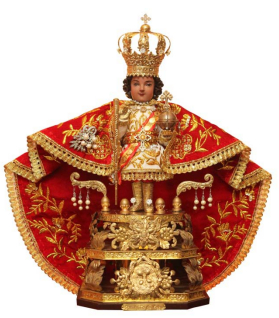 It was on 25th of April 2023 after COVID time, when the image of Santo Niño was brought from Sto Niño Basilica in Cebu, Philippines to St Luke’s Parish Revesby by Fr Dariusz Basiaga SDS, parish priest of that parish and enshrined thereat on …./……/2023.
It was on 25th of April 2023 after COVID time, when the image of Santo Niño was brought from Sto Niño Basilica in Cebu, Philippines to St Luke’s Parish Revesby by Fr Dariusz Basiaga SDS, parish priest of that parish and enshrined thereat on …./……/2023.
The Committee of Sto Niño was established on …./……/2023 . It is because of this devotion to Sto Niño in our parish was born and has become a joyous religious and socio-cultural celebration held every 3th Sunday of January annually.
Mass Timetable
Weekend
Saturday (Vigil): 4:40pm Rosary & Rec., 5:00pm Mass
Sunday: 7:30am, 9am, 11am & 6pm.
Weekday
Monday: 9:15am Mass, Ador. & Rec.
Tuesday: 6:15pm Ador., 6.30pm Rosary & Rec., 7pm Mass
Wednesday: 9:15am Mass, Ador. & Rec.
Thursday: 9:15am Mass, Ador. & Rec.
Friday: 9:15am Mass, Ador. & Rec.
1st Friday: Ador. 7am-7:30pm.
Healing Mass – 9:15am & 7:30pm.
3rd Tuesday: Ador. 6.15pm-7pm.
Mass – 7pm followed by Praise and Worship.
22nd Day of each month: 7pm Mass to
honour St Charbel with
veneration of the relics.
Ador. – Adoration.
Rec. – Reconciliation.
SOCIAL & LIVESTREAMING
FACEBOOK YOUTUBE INSTAGRAM
Parish Location
1 Beaconsfield St, Revesby, NSW 2212, Australia
Parish Office Hours
Mon, Wed, Thur & Friday: 8:30am to 4pm.
Phone: (02) 9773 9065
Deanery: South West Deanery
Diocease: Parish Boundary
Parking Carpark
Available (Entry Via Beaconsfield St)
Weekdays: Around the Church or on the road.
Weekends: Parking is located in the School yard.
Wheelchair Access: Available (Via Side Door)
Office Team
Priest: Rev Dariusz Basiaga SDS PP JP
Pastoral Associate, Sac.Co. & Secretary: Pauline Sahyoun
Bookkeeper: Maria Amaral
Administrative Assistant: Yvette Elliasl
Catechists’ Coordinator: Jowell El-Zreiby
Playgroup Coordinator: Marilyn Hardy
Youth & Young Adult Ministry Coordinator: Chloe Zaiter
Formation Coordinator: Ansir Aquinas
Marketing & Communication: Patrick Tadros
Safeguarding Office: Felicity Chang
Parish Council: Elliott Bowen
Finance Committee: George Mansour

